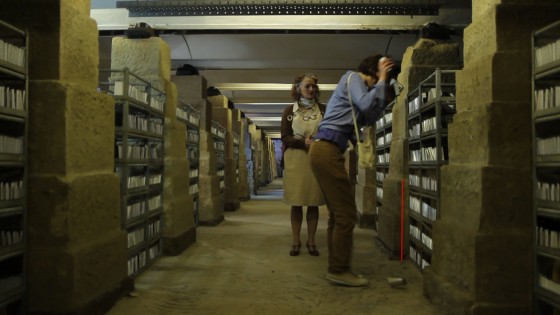
Yesterday I travelled down to London to sit in on the final mix for Stop/Eject. This is the last part of the filmmaking process as far as the audio is concerned. All of the disparate elements – dialogue recorded on set, dubbed dialogue (ADR), ambience, footsteps, effects and music – must be combined into one seamless whole.
Guiding the audience’s ears through the soundtrack of Stop/Eject was Jose Pereira, re-recording mixer. Alchemea, the college in north London where he works, very kindly gave us the use of their postproduction room, a very nice little studio with a big screen, cinema seating, surround sound monitoring and more knobs than Nobby the Nobber’s Knob Emporium.
The film sounded great already, thanks to the talents of sound designer Henning Knoepfel and Jose’s diligent pre-mixing. It was a very painless process to do the necessary surround sound positioning, adjust a few levels here and there and arrive at a final mix.
It was a world away from Soul Searcher, my first real mixing experience. Yes, Soul Searcher was a feature and yes, it had a lot of action, but looking back I can’t help but think it would have been much easier to mix if I knew then what I know now. Back then I was doing my own sound design, and I was convinced that quantity was quality, creating layer upon layer of noise which took an age to sort through and balance in the mix. I obstinately foleyed every footstep even when it had no hope of being heard under the music and gunfire. I believed logic was the key to every decision, that the same location had to have the same ambience every time we returned to it, even if the story and emotions would have been better served by something a little different. And I was determined to make as much use of the rear speakers as possible, even at the risk of confusing or distracting the viewer.
Now I know that less is more, that a few well-chosen sounds trump fifteen tracks of poor ones, that the rear speakers should be use sparingly and that you don’t always need to hear every clothing rustle and every footstep.
Anyway, with Stop/Eject’s sound mix in the bag, it only remains to grade the images, and I hope to have a date set up for that soon.








